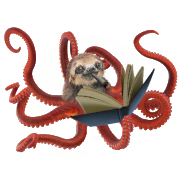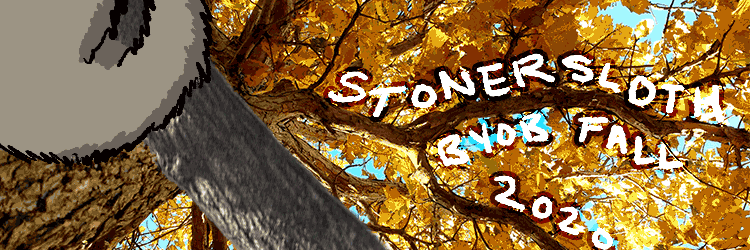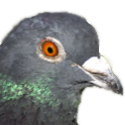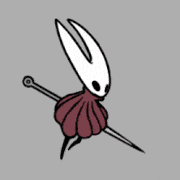|
|
Alright, super happy! I'll see to make it fun, because the paper is in its current state quite boring for non researchers, for some reason they don't even allow butt jokes or photoshop fun in those things, no wonders scientists are always single, am I right?? LonsomeSon posted:I also have an eight-year-old daughter who has asked to keep ants twice so if the interest continues I might be picking up that habitat which was posted a few pages ago. Low effort and low level entry sets are also quite cheap (like, maybe 60 dollars, probably way cheaper if you go for specific kid sets) and once setup really easy to keep, you basically only have to serve food and water and empty out their trash every week or two. If the colony goes too big for easy keeping, you can just place the entire thing in your garden or where ever and let them move out into the wild, assuming you used local species, they'll happily be on their own afterwards. Definitely report in if you decide to get on that with your daughter!!
|
|
|
|

|
| # ? Apr 25, 2024 10:58 |
|
|
 Let's take a look inside an ant's mind! Back when I was a kid I used to watch feral ants in a garden, because you know, what kid doesn't! When I re-discovered my fascination for insects during my studies I was quickly able to reconnect to that feeling, but came from a different angle, questioning how ants work, communicate and are able to do stuff this coordinated. I was especially fascinated by reading about their inability to cause traffic jams, no matter the number of ants moving. In various posts before I mentioned it already, but let's have a quick glance at the basics of how an ant thinks and what exactly the nature of the often referred hivemind actually is.  Look at this LSD trip right here. That is actually the brain of a fly. It's useful to see because insects almost all have a very similar setup in their nervous system. Which also means that this is actually not a brain at all, it's actually a supraesophagal ganglion. Say that three times in a row quickly. This is important to know because one fundamental difference in how many insects (and many other animals while we are at it, like spiders, many hexapoda and even some mollusca, like squids and octopi but in a different form there) think and function: In contrast to us mammals, they do not have a central nervous system, they have a decentralized one, split up via ventral nerve cords that form ganglia, miniature brains if you will where many nerves come together, across the body. Ever heard that story about spiders having eight brains inside their legs? That's that, they have leg ganglia. That's also the reason why you can see insects stirring and even moving or being seemingly alive and fine with their head removed or torn apart. You cannot just take off their brain and they're gone, you would have to destroy every single of their ganglia in order to truly kill them (doesn't mean you practically end their lives by cutting away vital organs obviously). Originally it was believed that a decentralized nervous system like that is unable to process higher form of neurological phenomena, like learning in its most basic form, combining input to form a realistic mental image of the world, not to say abstract thoughts. Much of this still remains true (or at least unchallenged), but that doesn't seem to be bound to the form of their nervous system, because other animals that do have a regular sized brain still do not possess great intellectual abilities as far as we know. Either way, lots of details, lots of mystery, we simply don't really know what's going on in there, why birds seem to sometimes be almost as smart as humans, why a kraken can beat you in chess or why dogs still happily hunt their tail for hours. The connecting part between this fancy fly brain to an ant's behavior however that we can see a lot of similarity in how their nervous system is build up compared to how the colony behaves as a whole. That's the (not new) thesis I want to get in on. An individual ant does not seem to be particularly smart for our naive human eyes. They wander around, do some stuff, do more stuff again, hush back and forth and get scared by you moving your finger too fast. Most people wouldn't think they are capable of doing anything worth noting, and yet this thread is full of posts where I wrote about ants making bread, ants building fortresses with loving AC built into it to farm their fungus, ants using war tactics to systematically raid places, others using herbicides or structuring a slave civilization from top to bottom. The answer to that is, of course, collective intelligence. Referenced in popular culture by body snatching monsters, overminds and larva mothers that control their entire swarm by the sheer use of their thoughts. That idea is interesting and also seems to make sense, because check these guys out: https://i.imgur.com/oPZ6ey2.mp4 (This is a gel farm, never loving ever use those for anything other than temporary experiments. The ants cannot survive in those for long and suffer greatly, despite what some companies advertise.) So you see, the ants coordinate each other, dig, carry out the removed stuff, place it in an orderly manner and in a matter of a day or two they create a full nest. Even more stunning, look at this: https://i.imgur.com/kiHbiYp.mp4 Ants creating a boat out of themselves to endure floods and move through water, I already posted about this in the army ant post. They form levels of ants, the lowest level that is underwater is in constant motion, as the ants that cannot breathe there stay as long as they can, then they climb up and breathe and the hole is filled by another ant from above.There is practically no soil or other material used other than the ants themselves. The question how this is possible mainly evolves around the question how they communicate. How do hundreds, thousands or even millions of ants inside a nest or a number of nests talk to each other to make this possible? Sure, pheromones, but as far as we know there is no "blueprint how the nest will look"-pheromone. Also, there is no evidence at all that there is such a thing as an ethereal being that tells them what to do, the queen certainly does not do it and we also cannot find any prove for telepathic abilities either. Instead, ants organize themselves in an entirely decentralized manner, communicating via a few hotspots in the form of pheromones to directly communicate, plus the entire environment as communication medium. Here's how this works: An ant observes its surroundings, finds a pool of honey via smell. It takes a taste and sees, ok, yes, this is loving good honey. It fills up its social stomach and moves back to the colony, pooping out pheromones on the way, barfing the honey into other ant's mouths. Those ants then question, where did he get this great honey? One of them will quickly find the pheromone trail and also move to the honey, doing the same thing as the first ant did, using almost the same path but skipping a few stones and twigs on the way, being quicker that way. More ants come and do this, they now have the choice between the first, longer trail or the second, shorter trail. They cannot know which is which, the pheromone does not include that information. So instead, they just take one by random. The ant that took the shorter path will be back home earlier, barfing into other ants mouth earlier and will be back at the honey more quickly. This means she can re-visit her chosen shorter path more quickly, too, increasing the density of the pheromone trail. This happens over and over again and in a matter of minutes, they will have a fully fledged ant path, quickly moving honey around. This basic method of a communicating with each other via the environment, combined with patterns used randomly and the basic use of statistics is how ants do most of their work. One ant starts carrying sand to a spot, another ant finds the moved sand and thinks, yeah, this is a great spot, and also moves sand there. More ants see this and more sand is moved. This goes on until a full ant hill is formed. You see, this is the magic behind all of this. We humans are strictly bound to our individual thinking, trusting our own senses and communicating both directly and indirectly with each other, but our sense of individuality requires us to implement hierarchy and organize us from top to bottom or bottom to top. For ants, this does not happen. They do not have any kind of real queen, real overmind or boss, there is no major ant that tells the minors what to do, there is no telepathic communication required at all. Every single ant is hardwired to support and serve their colony, as for them, their life is equal to the life of the colony. They will never harm their own colony deliberately and will always do what's best for it - they will figure out the quality of their action by the simple use of trial-and-error, repeating those actions that seem to work and avoiding those that don't. This is the true hivemind behind this, the actual collective intelligence that makes up the highly complex and intelligent behavior we see in ant colonies but not in individual ants. The colony has highly complex properties, some of which we only know in human intelligence, like having a deep understanding of its surroundings, an abstract mental image of how the world around them used to look vs. how it looks now, enabling them to figure out what changed in what way and properly react to it. To come back to the original thesis, the single ant is basically a neuron, limited in its capabilities to think and sense its surrounding, but every single ant forms a higher structure, basically a neural network, that enables them to do something the individual animal could never even think about doing on its own. In that model, pheromone spots are like the ganglia they have in their bodies, where they come together and coordinate more directly with the nest itself being the center of the structure. The close relatives to ants, bees, even took this another step up, introducing a de facto democratic hive intelligence, where the bees decide as a collective where to build the next nest based on votes. It's the same principle, but combined with more direct communication in the swarm. Watching videos of them doing this amazes me every time. For a visualization of all of this, check out this cool animated video about ants doing things: https://www.youtube.com/watch?v=vG-QZOTc5_Q I'm deeply fascinated by the imagination an ant must have, the world for her must be so fundamentally different than it is for us. Goons Are Gifts fucked around with this message at 18:51 on Jul 12, 2019
|
|
|
Goons Are Great posted:
swank post on ants as brains
|
|
|
|
|
|
lost my old email posted:swank post on ants as brains ya meant to comment earlier, really cool post, ty!
|
|
|
|
|
Manifisto posted:ya meant to comment earlier, really cool post, ty!  thanks GaG, I love reading your ant posts! thanks GaG, I love reading your ant posts!
|
|
|
|
|
For some more ant media, if you don't already know it, check out this one hour ant film featuring Sir David Frederick Attenborough lying in grass through half of it: https://www.youtube.com/watch?v=vt7jGGroF0Q They got some insanely good ant footage and Attenborough also gets climbed by ants all the time, which is clearly a bonus.
|
|
|
|
the collective ant brain both fascinates and terrifies me |
|
|
|
who's to say that the collective sum of human behaviour doesn't amount to the same principle? or that my own brain is essentially a bunch of ants? |
|
|
|
Nosfereefer posted:who's to say that the collective sum of human behaviour doesn't amount to the same principle? or that my own brain is essentially a bunch of ants? There are folks who take each of these positions who are considered credible theorists in fields based in neurology or human behavior, not sure if this is helpful or just unsettling. |
|
|
|
|
That's an interesting thought that me and my colleagues are currently working on quite intensively. There are a few problems but also some solutions to the idea of us and our behavior being approachable by a similar concept like we observe in eusocial animals. The two main issues are our sense of individuality and our means of communication. While we undoubtedly are very social animals, we also are fascinatingly focused on our individual good, that is a quite rare combination for animals, but absolutely typical for primates, especially Hominidae. We consider every human around us that we aren't directly related to as a potential rival to any kind of degree, with which we compete for resources. This obviously has an insane amount of detailed levels, but the basic principle remains true. After all, the very first thing our brain does when it sees another human is to see if he's a threat to us. Additionally, our communation relies both on a visual (gestures and countenance) and an auditive (tone of voice and language) medium, which offers a lot of depth and developed into highly complex and very detailed interaction. However, that is also very imprecise and comparably inefficient. For collective intelligence in general and stigmergy in particular as we see it in ants to work, this has to be dealt with, because else we cannot interact with each other on this level, let alone organize us. We wouldn't trust our environment to tell us anything about what we need to do, we wouldn't even trust each other to reach an agreement. There are however ways to enter the kind of mass psychology which in sociology and neurobiology sometimes leads to the idea of collective intelligence coming up, specifically when we manage to eliminate the boundaries our typical mind sets us in, the most famous example is the internet. If you see this thing as an entity in itself, bound to almost nothing but language transmitted via electronic signals around the world, reaching billions, that entity then shows certain patterns of behavior that we usually only see when looking into collective systems. Another example is the idea of masses of people in direct physical proximity to each other, like in public events, protests or even on a concert. That feeling you have as part of the group that makes you feel like one of many, getting somewhat torn into the emotions you share with the others around you, that situation resembles a certain collective. There are even studies how groups of people act as a massive entity in those moments, some suggested a certain decentralized organization due to a common goal and a common connection, but as soon as you let this mass of people organize themselves there are leaders and followers coming up, those who agree and disagree, including the typical conflicts on whatever degree. In that sense, we as well as every other primate species seem to be somewhat hardwired to a certain degree of politics, which is basically just a method to deal with these issues. So yeah, while it seems impossible for us to just start a colony of humans and go full eusocial from there, there are ways and methods of cooperation that can bring us closer to it. With the internet growing and technology coming up to even more and even more differently talk to each other, this might be subject to change and we seem to be able to observe similar phenomenons here and there. Goons Are Gifts fucked around with this message at 23:56 on Jul 16, 2019
|
|
|
|
|
Goons Are Great posted:That's an interesting thought that me and my colleagues are currently working on quite intensively. That sounds like a really cool avenue of research. Pity we lack so much information about other species of humans that used to exist - particularly neanderthal and denisovans, would be interesting to compare and contrast these tendencies in them compared to us and each other. I do wonder if neanderthals being largely big game hunters forced to cooperate to bring down prey and to survive the sort of injuries that big game tended to inflict (many adult neanderthal skeletons we've found had survived some pretty severe injuries that you don't get better from without help) might have had some effect on the sort of social groups they formed and how they operated together.
|
|
|
|
|
Stoner Sloth posted:That sounds like a really cool avenue of research. Pity we lack so much information about other species of humans that used to exist - particularly neanderthal and denisovans, would be interesting to compare and contrast these tendencies in them compared to us and each other. I do wonder if neanderthals being largely big game hunters forced to cooperate to bring down prey and to survive the sort of injuries that big game tended to inflict (many adult neanderthal skeletons we've found had survived some pretty severe injuries that you don't get better from without help) might have had some effect on the sort of social groups they formed and how they operated together. Fascinatingly, the issues we Homo Sapiens face when dealing with other humans have by no means hindered us in developing deep cooperation. That isn't limited to rather surface levels of working together to bring down a common foe or sharing resources, but on a fundamental level of epistemology. When we look at human intentionality, meaning our ability to correlate between things, we see the rather common individual intentionality of us as a person relating to something, which most animals seem to be capable of, but also the more limited shared and common intentionality, which we so far mainly are able to observe in highly complex animals that show drastic levels of intelligence, like elephants, primates, whales, birds and to that degree the abstract construct of an eusocial structure. Additionally though, we are so far the only animal on Earth able of collective intentionality, meaning our ability to pass knowledge across generations, understand what each other thought and meant to accomplish, planning together as an organized entity to reach a common goal that we then even can pass on to other humans, as they are able to follow our instructions and ideas. For other Hominidae (and every other animal we know), this does not happen as far as we can tell, they are unable to develop the will to share information for the sake of doing so, plan together over a long period of time. Even eusocial animals only developed similar abilities by using trial-and-error, we can't tell if ants actually plan to build the nest the way they do before they do it, let alone sharing the plans with each other. It would be extremely interesting to see if that ever happened in other species of the genus Homo, or if that's something only we were able to develop. If so, it's an insane jump from one species to another and understanding what spark of imagination enabled us to do so, as this is the key resource in our successful conquest of this planet, would be the holy grail of cognitive science.
|
|
|
|
|
Goons Are Great posted:Fascinatingly, the issues we Homo Sapiens face when dealing with other humans have by no means hindered us in developing deep cooperation. That isn't limited to rather surface levels of working together to bring down a common foe or sharing resources, but on a fundamental level of epistemology. this is all very cool stuff so what do you make of the stories of corvids that inform one another of people who are mean to birds? I mean the stories where people who had had a bad interaction with birds in one area getting attacked by different birds in a different area, almost as if the birds were able to describe what the offending person looked like . . . I am still having a hard time believing that birds can pass along information of that level of sophistication, maybe I'm getting some details of the story wrong
|
|
|
Goons Are Great posted:heavy poo poo about ants and brains and whatnot 
|
|
|
|
|
|
Manifisto posted:this is all very cool stuff Oh yeah that's a thing, they teach each other about meanies, even beyond generational knowledge. Our understanding of their understanding is still quite new and it posed a big news when we found out just how incredibly intelligent corvids are. Just like dolphins with their schools, the parents teach their kids about stuff who then teach their kids later on, giving them a huge advantage towards those birds that don't know about threats, but also ways to acquire food. Even other birds do this, like Pigeons for example who do this all day long in our cities, learning how to deal with humans and what food they can eat and what to stay away from. The difference between their teaching and our cognitive abilities lies beyond the scope or teaching tricks or using tools, even though that alone already is an insanely big step. We humans seem to be the only animals who are not only capable of understanding our surroundings, but also understanding the knowledge of other people and their surroundings, even if it's completely abstract, distant, theoretical or even fictional. Birds teach each other about threats and food, because they learned it from their parents or first hand, passing it along time. The focus here lies in the bird that learns the thing, not the bird that teaches it, forming a construct of cognitive mimicry. There were studies regarding this animal theory of mind that proved that ravens are indeed able to understand what another bird knows given the circumstances, but we couldn't see them understanding the abstraction requires to fully engage with another bird's mind. That's the difference between associative learning that involves learning from the actions of others and institutional teaching, that involves the ability of theoretical planning and constructing a fictional mind set from which you can observe the world. There are however studies that tackle that problem: For example, there is a variation of the false belief test, where a raven is watching a human placing a bit of food beneath a towel. The raven clearly sees that happening and it's proven that he understands that there is food hidden. A person leaves and a second human enters the room, finds the food and hides it behind a box, before leaving again. The raven also sees that. The question now is whether or not he understands that the first human believes that the food is still beneath the towel when re-entering, which is indeed what happens. As a matter of fact, the raven not only understands the discrepancy between what is the case and what the first human knows, he even was able to teach the first human where the food actually is. This means he understands a) the concept of knowing and not knowing something, b) that knowledge is concept based and requires sensoric input in order to acquire knowledge and c) that he as a bird is able to teach another species about something he knows, understanding the concept of a common goal beyond biological barriers. This test also exists for humans and while obviously, even without language, any adult can solve it, a baby only acquires the ability to do so at the age of 3 or 4. However, as soon as it turns abstract, meaning that there is more time between the events and the process of hiding involves several steps or specific planning in where to hide at what time, like varying the place and time and following a specific pattern, the bird seems to no longer understand what is going on. That does not mean he doesn't possess the ability to think in an abstract way, it merely means that we are unable to prove that he might have a way to understand it. So who knows, so far the act of planning ahead is the breaking point for all other animals we observe, but research is ongoing and sometimes there are certain hints that we still might underestimate other animals.
|
|
|
|
|
Goons Are Great posted:So who knows, so far the act of planning ahead is the breaking point for all other animals we observe, but research is ongoing and sometimes there are certain hints that we still might underestimate other animals. really fascinating! can you recommend any reading along these lines?
|
|
|
|
|
Manifisto posted:really fascinating! can you recommend any reading along these lines? Sure thing, there is this nice book about most of the details I mentioned, also that one here. Then for the hive mind stuff and stigmergy there is this a good abstract that's running through the entire stigmergy thing in 15 pages, for further reading into collective intelligence for animals and ants in particular there is then this book. Plus a ton of others and more details of course, depending on what you want to get into, there are also are some more accessible amazon books around on that matter if you'd prefer those (especially since I just saw that most of those things are restricted access and cost a bit).
|
|
|
|
|
Goons Are Great posted:Sure thing, there is this nice book about most of the details I mentioned, also that one here. Then for the hive mind stuff and stigmergy there is this a good abstract that's running through the entire stigmergy thing in 15 pages, for further reading into collective intelligence for animals and ants in particular there is then this book. Plus a ton of others and more details of course, depending on what you want to get into, there are also are some more accessible amazon books around on that matter if you'd prefer those (especially since I just saw that most of those things are restricted access and cost a bit). very cool, ty for the recommendations, I'll see if I can track them down!
|
|
|
|
|
When it's that magical time of the year, the wind is breezing, there is festive music everywhere and some big person drops by your house, the belly full of presents, you know exactly what I'm talking about : It's Nuptial Flight Season!! (in the northern hemisphere that is, sorry Australians)  Here in Germany it's high season of flying, loving and eating your wings. Just today it finally was time for the very first nuptial flight of the year, as while the temperatures are fine for a while already, the last week was very cloudy and windy. This noon though, at around 11am it was just the perfect weather. Not too hot at ~23°C, almost no wind, shining sun and not too dry air. The ant alates (=winged sexual ants, being queens and drones) left their nest all around the city, mating in mid-air and landing somewhere safe. Right now as I'm posting this, there are hundreds of queens running around the house, I saw dozens of different species and queens all across the street and when I just went to the grocery store, the meadows nearby all have tons of dead drones lying around that already fulfilled their duty, with some more queen ants and drones meeting and mating there as we speak. It's a magical spectacle to watch!  This lady just broke off her wings and was running around the street in front of the grocery store.  That one just had to flee from some of the rival ants living in my driveway.  She just had to fight off another male ant trying to get a last shot at her.  She was very fast, so the picture is blurry, but if you look closely you see that she is carrying a spider in her mandibles. This badass of a literally hosed queen just killed the spider. They all are running around, searching for a new home. A small hole in a wall, some space inside a tree or twig, some soil to dig into. All they need and want right now is peace, so they can calm down from this most important flight of their lives. Most of the queens will not make it, either die before they can find a home, or die later after trying to found their new colony. However, their mother colonies produced dozens of queens and hundreds of males, so there is enough room for some queens to successfully place the cornerstone of their new empire. This year, with my own colony being so well (but way too young to produce alates on their own - if all goes perfect the earliest date for that is summer next year), I decided to help at least two of the queens out and increase their chances of survival, by taking them under my protection. Meet my two new girl friends:   The species are Lasius Niger, the same as my regular colony, and Lasius Platythorax, a sister-species of L. Niger that is a tiny bit smaller and less massive, they usually live in the woods, but due to my city having a lot of green spots around here, she probably was born around here, too. I placed them both in a birthing tube with water, covered it with a red filter foil and carefully placed them inside a drawer in my kitchen, so they are free to vibrations and noise from my raging parties. They are definitely pregnant, as I found them around my house without wings, so they already broke them off to now eat the muscles in between, so if they are healthy and well, they will now sit in that tube for at least one or two months, barely moving. Her body will start digesting her muscles and suck out the proteins of that to produce the first few eggs that will in the matter of one to two months into her very first workers, called pygmy, due to their unusually small size due to the lack of nutrition during larva stage. A day or two after hatching and her exoskeleton hardened, they will try to dig away the cotton wool I sealed the chamber with (meaning I will make a small hole in it and place a straw inside, so they can move in and out freely) and then.. I don't know yet. I do not intend to keep them as a second and third colony on my own, but maybe I can convince a friend to take them if they want to get into the ant keeping business, or alternatively, I will bring them out into the woods, dig in the tube and release them back into nature. That way they can continue to use the tube as nest and can move out anytime they want, so it's considerably safer for them. Who knows, maybe in a few years if they succeeded, I will find some queens and drones they raised and the cycle can begin again. If your summer weather is also nice, make sure to keep an eye out of winged or unusually big ants around your house! Good chances your local nuptial flights are happening as we speak.
|
|
|
|
|
Goons Are Great posted:When it's that magical time of the year, the wind is breezing, there is festive music everywhere and some big person drops by your house, the belly full of presents, you know exactly what I'm talking about : gl new ant queen frens! It's interesting though, it seems like Australian ants breed for much more of the year cause barring perhaps mid-late winter it's warm enough for them to successful do their nuptial flight. We have little black ants (don't know their species) that were doing this less than a month ago. But given these long seasons appropriate for mating flights, different species do so at different times of the year and depending on local weather/climate conditions. For example Iridiomyrmex species and Aphaenogaster longiceps do their nuptials, in Northern Victoria at least, in September, Camponotus intrepidus in October, C. aeneopilosus and Amblyopone australis in December, Camponotus nigriceps and C. cosobrinus in January, Myrmecia fulvipes and M. pilosula in Feb, various Pheidole species as well as Myrmecia simillima in March and Myrmecia species pyriformis, fortificata and brevinoda in April (their season where it's warm enough isn't quite as long as ours or areas further north).
|
|
|
|
|
Stoner Sloth posted:gl new ant queen frens! That's mainly because of your weird climate that makes it way easier for insects to thrive, hence the number of insect bites I bet you have right now. The big difference is the lack of a real, long winter, meaning permanent temperatures below 10°C. In Europe, Northern Asia and most parts of North America this is a huuuuge thing, stripping ant life into a very, very tight schedule. Imagine you're a queen in Europe and got pregnant today. You now will sit in your chambers for at least a few days before you can even think of laying the first egg. The first workers won't be fully grown for at least a month, realistically more like two months in total (species with high speed hatching are all in the tropics), that means you get your first maybe 5 kids at best in mid September, when temperatures start to drop already. They get some food and keep you happy, but another batch of eggs can't get into the queue until you're taken care of, so that's another two months down the drain, meaning November in perfect conditions. Temperatures are now down to below 10°C almost permanently, impossible for you to operate. You go to sleep with your kids and with a bit of luck your freshly hatched larvae, which you might even have to kill and eat so you make it through winter, setting you back again. You basically just got one batch of eggs to adulthood, let alone any losses to predators, diseases, changes in environment, having to move etc. You wake up when temperatures rise again, which won't happen until maybe late February, more likely March. Now you can finally start growing, but alates are expensive and bring no direct advantage for your colony in itself, it's just your duty to spread your DNA. So, another year goes by and now you start producing alates. Egg laying starts in March, they take even longer to develop and require ten times more resources. They may be grown up in early June at best, still they need time to prepare for the most important moment in their lives, plus the weather must be just perfect as they are not amazing at flying and wind or rain will kill them. All of that locks you to at best June to start and September to end the nuptial flights for alates. You may be able to get quite a lot of alates out of the cooker in that time, in fact big colonies produce millions of them during their lifetime, but unless the climate is all over the place and weather is super nice, flying post September will be a suicide mission. Especially given that it only really yields results if there are so many ant queens flying off that they can overwhelm predators, so it has to be somewhat synchronized. This all changes when you don't have a gap between November and March. Other weather, more time being productive, more time to gather resources, even one month additional time would be a life changer. Plus, different climate makes it possible to gain resources in another, more efficient way and over a longer period of time, which enables your species to improve the time your babies need from egg to adult ant. That's also big part of the reason you have a hundred times more ant species in just one state than most of Europe has in total.
|
|
|
|
|
By the way, the part of synchronized nuptial flights is a big thing everywhere, because you overwhelm predators by satisfying their needs. This technique is called predator satiation and yes, that means that ants throw a big percentage of their brood into the toilet for the benefit of a few that make it. In total more than 90% of the queens don't make it to their own colony, less than 2% build one that lasts for longer than a year. These events are exceptionally large and aren't bound to just one colony or even species, even subfamily. Especially in Europe and Asia where you are this tight in schedule, synchronized nuptial flights happen every year and the swarms become so big that even our radar systems catch them, and the sky can turn black in mating ants. Goons Are Gifts fucked around with this message at 23:33 on Jul 18, 2019
|
|
|
|
|
That all makes sense - we really only have a couple of months were temps dip below 10 C and even then it's often warmer than that. We are truly blessed with ants! Hadn't realized just how blessed until Ant Crew came along, now I'm fascinated by seeing different species. Another BYOB success story! Also figure it makes a difference to bees which unlike the rest of the world are still doing well here - the hive outside my house has in good years kept going while throwing off 5 new swarms over a period of a few months. Been pretty lucky with the stings though, had a few but fortunately not allergic!
|
|
|
|
|
Goons Are Great posted:By the way, the part of synchronized nuptial flights is a big thing everywhere, because you overwhelm predators by satisfying their needs. This technique is called predator satiation and yes, that means that ants throw a big percentage of their brood into the toilet for the benefit of a few that make it. In total more than 90% of the queens don't make it to their own colony, less than 2% build one that lasts for longer than a year. That makes sense and is also really freaking cool!
|
|
|
|
|
I'm loving all this ant info, thanks for putting it all together! I've never seen the crazy level of simultaneous queen flights you describe. I did at one point buy a ginormous coffee table book on ants, I only read bits of it though, but one thing I remember is that in I guess some places various species occupy incredibly specific niches as to time of year and time of day (and perhaps setting, how high they fly, etc) for their queen flights, I always thought that was interesting.
|
|
|
|
|
Not posting much but still reading thank you for your thread |
|
|
|
|
Manifisto posted:I'm loving all this ant info, thanks for putting it all together! I've never seen the crazy level of simultaneous queen flights you describe. I did at one point buy a ginormous coffee table book on ants, I only read bits of it though, but one thing I remember is that in I guess some places various species occupy incredibly specific niches as to time of year and time of day (and perhaps setting, how high they fly, etc) for their queen flights, I always thought that was interesting. Well the thing where UK weather radars catch the mating queens was incredibly special, because that means the numbers must have been absolutely crazy. Most European species are not that insanely big, even the queens rarely exceed 10-15mm in length (that's smaller than a typical worker bee) and young ones are still somewhat smaller due to the ovaries being not yet fully there. Them forming a cloud so big that the BBC catches it, that must be millions and millions of ants from across the region all at the same time. The niches are interesting though, because predator satiation simply means feeding your predators as much as they want so they leave the rest be, so it does make sense to further reduce the numbers or change the kind of predators involved by flying out at specific times. Bats are easier to feed than pigeons, ravens are less numerous, other ants (still the biggest predator for ants, by far) sometimes exclusively hunt at day or night depending on the species, so there's a lot of statistical detail here. The really magical thing is though that we do not know how multiple colonies apart from each other, let alone various species, even genera or subfamilies synchronize their flight, as there's no way they can read each other's pheromones, especially over the distance. Some of it will be coincidence, good weather means good chances, but the numbers are insanely high. Researchers still have not found the missing link in how they know when to flight out like this, because sometimes they even do it when their weather is bad and a kilometer further south it's good already, so the queens and drones there take off. This way they can meat and mate each other, even though the odds should say no.
|
|
|
|
|
Good news! https://www.sciencedaily.com/releases/2019/07/190716103411.htm Aussie ants breaking the trend.
|
|
|
|
|
Ant Crew Update Time! The colony is growing and well. They are also getting increasingly hungry, usually they wouldn't take more than three or four fruit flies every few days, over the last two days however I gave them a total of 26 (smaller species, though) fruit flies and they took every single one of them and brought it into the nest. I clearly underestimated their will to take stuff into the nest, because by now they are refusing larger prey that they cannot properly or efficiently transport home and they only cut it up and eat it outside the nest when they are really hungry. So, there go my plans to increase my fruit fly production, because the ones I keep are too large for that, it's back to hunting inside my apartment (which is actually really easy). Getting a picture of her royal majesty is getting hard nowadays, they keep her secured and hidden away quite well, but here's the best shot I could get:  The glass is quite dirty from the inside, which makes it hard. However, you can clearly see her as well as seven (7!) workers, out of a total of 12. That is absolutely amazing, given that just a few months ago, the queen was pretty much all by herself after the incidents happened. Also, the white pellets she sits on are packages of eggs. Since I switched to fruit flies, she started gearing up her industrial baby production and is pooping out eggs like crazy. Most ant species glue their eggs together into FedEx-friendly packages so they can transport them more easily. They have at least three packages of eggs, each package containing maybe 6 to 10 eggs, plus there are three baby larvae that are super cute and even one pupa. Just yesterday when I cleaned up their junkyard (they produce a lot of trash now), I found the empty shell of a pupa, which means at least one more worker hatched in the last two days, which made me feel like a daddy. Also, here are way better pictures of my two mentioned baby queens that I found just last month during nuptial flight:   As you can see, also eggs for both! They are still in the beginner's stage, eating up their muscles to make eggs without any workers, but I expect the first babies somewhere around mid August, which should be able to pupate and turn into adults until mid or end of September. I can imagine both are looking forward to no longer being all alone all day long, but they are both very protective and loving their eggs intensively. Whenever I check up on them and they see the light, they hold their body above the eggs, hiding them from the evil light and as soon as they think I'm gone, they start licking and kissing them again. Being a mom is a full time job.
|
|
|
|
|
Thank you for the update friend! Glad to hear that the ant mums and their many babies are doing well!! You are a good ant dad!
|
|
|
|
|
Good to know the little colony is rebuilding! |
|
|
|
|
wow, that is p cool! thanks for the update!
|
|
|
|
Yeah I scrolled past no-updates Ant Crew the other day and had a pang of worry; I too am glad to hear that all of the girls are doing well! |
|
|
|
|
Oh yeah no worries, when I do effort posts you can assume the current status is cool and well, as there's nothing else to post about. The colony is currently in the long run stage, where it continuously grows and grows and does things, but hardly changes the usual patterns and habits, as they found something that works for them. Their diet currently is various fruit fly species that I collect in my apartment using a live trap and yeast bait (works insanely great, if you have problems with fruit flies at home, this may be for you to get rid of them), plus honey, both of which they enjoy quite a lot. Basically I check up on them every day, every other day clean up their trash that they, lazy as they are, just place outside the nest entrance, add some pre-killed fruit flies and make sure their water and honey supply is up and running - that's basically it, apart from dropping some water onto the nest to keep it moist whenever my hygrometer tells me to do so. That's practically the entire interaction I have with them currently, in this stage ants are very low maintenance and run themselves without a problem. Every few hours a scout comes out of the nest, checks up on the environment, drinks up, eats some honey and checks if any more dead insects have magically fallen out of the sky, then they either take it back home. Since I basically only see those scouts and more ants only come out if they're hungry, it's not really easy to keep track of their numbers and how it's going. The next bigger step will have them finally switch nests again, which also will result in a new outworld for them to explore, I'm curious to see when they decide that this will happen!
|
|
|
|
|
https://forums.somethingawful.com/showthread.php?threadid=3792330&pagenumber=5176&perpage=40#post497303729 Yo,Ant Crew. Answer this : do Ants love jizz as told above, or is the guy diabetic? |
|
|
|
|
Jack-Off Lantern posted:https://forums.somethingawful.com/showthread.php?threadid=3792330&pagenumber=5176&perpage=40#post497303729 Alright, this is a bit nasty and also speculative (I do not know if there's any experiments or anything regarding that, I mean, I kinda hope at least), but the short answer should be: Yes, just by looking at the ingredients. Human semen consists mainly out of water, various hormones (mostly dopamine and adrenaline), some pheromones and endorphins as well as protein and salt. Plus, the pH is slightly alkaline. Additionally, the internal juice in the cells that produce it come out with it, meaning stuff from the testicles and their glands, containing the usual stuff that's in cytoplasm (sugar, water, oxygen, a thousand more stuff that keep us alive), so there's a certain chance of a certain amount of glucose and other sugars being flushed out, too. Since we humans can smell it quite, eh, well, you can assume so can ants, as their noses (that are their antenna) exceed even the capabilities of dogs by far. That means for them they smell the pheromones that they probably cannot understand using their usual methods of communication, but also they smell the proteins stored inside the sperm itself. Given that the sperm only makes up a tiny fraction of the mass that is the entire semen (like, 98% of it is water and stuff, sperm is small), it won't exactly be an energy drink, but if they get attracted by the smell of pheromones and proteins, they are hungry - and they always are - and it's easy enough to obtain, it's quite certain they will go for it. That is actually even more likely when the semen lands in a tissue, because then sperm dies off in a matter of minutes, the water is sucked up (which is good for the ants, as they can lick it back up along with the dead sperm) and the useless parts of the stuff dries out on the surface, leaving only a strong smell of proteins and pheromones and remains of water. Ants are very adaptable and will accept any option that fuels their colony, so, yeah, they'd probably go for it. Also there are a lot of reports on the internet of that kind of stuff happening, so there is some sort of statistical trend, too.
|
|
|
|
|
By the way that guy probably has an ant colony living in or nearby his house and I'm quite certain it's not the first thing or time he involuntarily fed them. I wonder how his kitchen looks like.
|
|
|
|
|
Thank you, Ant Person for making us smarter about cum and Ants. |
|
|
|
|
Another small and rather sad update, for so far the second time since I got the colony, I found a dead ant nearby the nest. At least this time it's a natural cause and not me accidentally killing her. Here's the beauty:  I put her under the microscope to check if there's anything suspicious on or about her, but I also used the chance to make a close up photo of my one of my Ant Crew girls. It's alright though, no mites, no parasites, nothing bad to see on her and the white dots on the photo are just sand particles, so that's cool. Two weeks ago we broke pretty much every record in temperature my country ever bothered to write down and on one of those days, I found one worker outside the nest, working on food, when she suddenly stopped moving at all. She collapsed entirely and another worker came by, covered her with water and carried her back into the nest. I suspect that this worker is her and I also suspect that she got severely injured that day due to overheating; it's likely she didn't manage to cool herself off quick enough using the water like the other ants. I am not sure why she died now though, but it's possible that she was unable to eat or drink properly after the incident, so I hope that it's just that and nothing else that I should watch out for. Either way, for ant keepers it's normal that worker ants die regularly and way before their natural lifetime (for this species the workers can turn 3 to 4 years old theoretically), simply due to accidents, diseases, random problems, heat, drought, whatever might happen. Since the rest of the colony is alive, moving a lot and fine, there is a ton of brood and no one else died, I guess everything is cool for them. Also, they brought her to the graveyard that they constructed just for her, which means the rest of colony is healthy enough to do so and aware enough to keep the nest clean of dead corpses, which is completely natural behavior and another hint that everything is fine. Anyways,  my little friend. my little friend.
|
|
|
|

|
| # ? Apr 25, 2024 10:58 |
|
that's sad, I'm sad about an ant. I'm a softy. but it's really fascinating that ants will do first aid and rescue ops! I figured they would just keep going... that's super neat! |
|
|







































